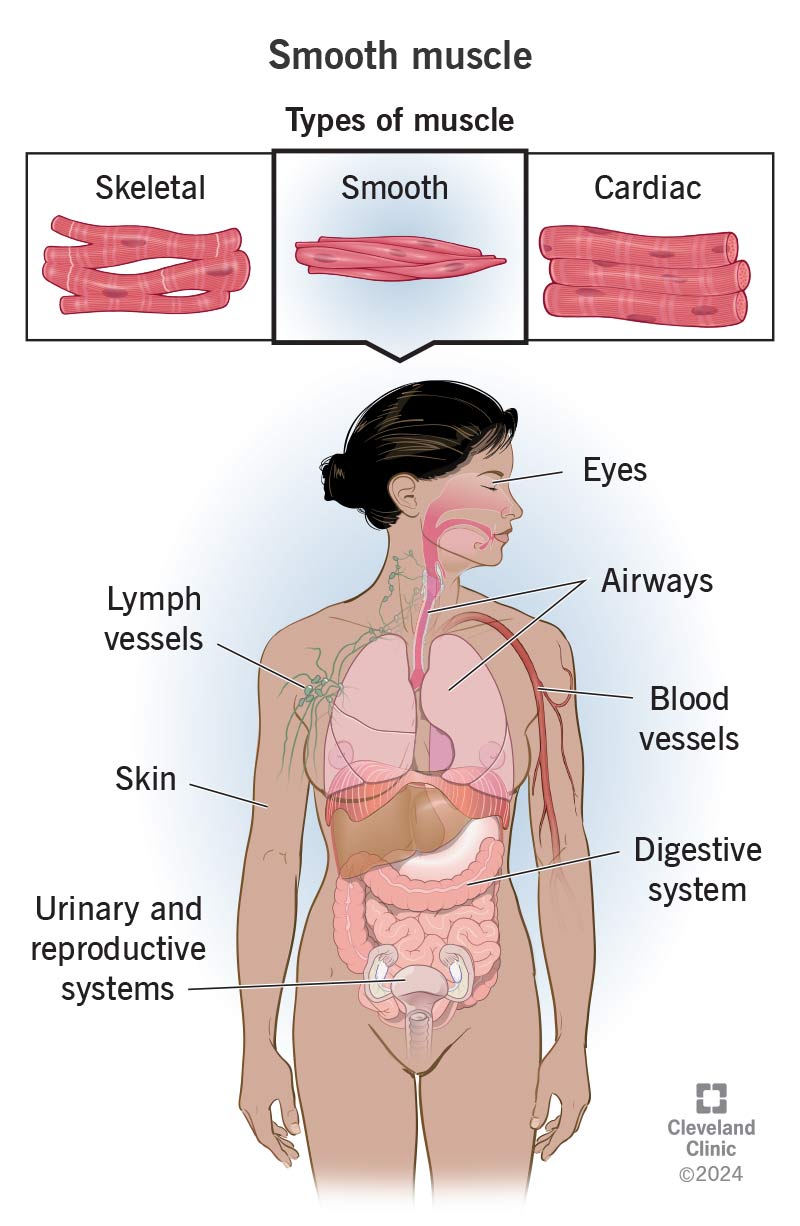Smooth muscle is a type of muscle tissue that works automatically. This tissue is part of your body’s most important functions, ranging from blood pressure and circulation to vision to how you digest food. Conditions that affect smooth muscle specifically aren’t common, but they can be severe when they happen.
Advertisement
Cleveland Clinic is a non-profit academic medical center. Advertising on our site helps support our mission. We do not endorse non-Cleveland Clinic products or services. Policy

Smooth muscle is a type of muscle found in many places inside your body. It gets its name from how it looks, which is different from most other types of muscle. The smooth muscles throughout your body work without you thinking about them. They handle some of the most important automatic jobs throughout your body systems.
Advertisement
Cleveland Clinic is a non-profit academic medical center. Advertising on our site helps support our mission. We do not endorse non-Cleveland Clinic products or services. Policy
Your body has three types of muscle: skeletal, cardiac and smooth. Skeletal muscle cells are long and cylindrical, which is part of why they’re often called muscle fibers. These fibers form bundles. Bunched together, these fibers make the muscle’s surface look like it has grooves (striations).
Cardiac muscle also looks smooth, but it has key differences in its structure. It also only exists in one place in your body: your heart.
The main difference between smooth and skeletal muscles is that skeletal muscles are supposed to respond to your control. Smooth muscle movements happen without you thinking about them. Smooth muscle cells also have a different structure from skeletal muscle cells. They have narrow ends, a wider middle and are a lot shorter.
Smooth muscle is found in places throughout your body, like your:
Smooth muscle has a few main jobs:
Advertisement
Smooth muscles in certain places can also have very specific jobs. Some examples include:
Smooth muscle is vulnerable to many of the same conditions that can affect any muscle, especially injuries or paralysis. Some other conditions that can affect smooth muscle include:
Smooth muscle conditions usually disrupt how body systems work. The symptoms depend on where the muscles are and what they do. Some examples of symptoms include:
Because smooth muscle is part of so many different body systems, there are a lot of possible smooth muscle symptoms and conditions. A healthcare provider can tell you more if you have concerns about symptoms or conditions, or refer you to a specialist who can help.
Smooth muscle tissue is a part of every major body system. From your airway muscles to the zonule fibers that focus your eyes, smooth muscle is working quietly behind the scenes. It’s easy to forget they exist when they work properly. But if you’re concerned about conditions or symptoms that could affect them, it’s a good idea to talk to a healthcare provider. They can help you better understand how these muscles work and what can affect them. And if you have a smooth muscle condition or symptoms, your provider can help guide you to care that may help.
Advertisement
From sudden injuries to chronic conditions, Cleveland Clinic’s orthopaedic providers can guide you through testing, treatment and beyond.

Last reviewed on 01/30/2025.
Learn more about the Health Library and our editorial process.